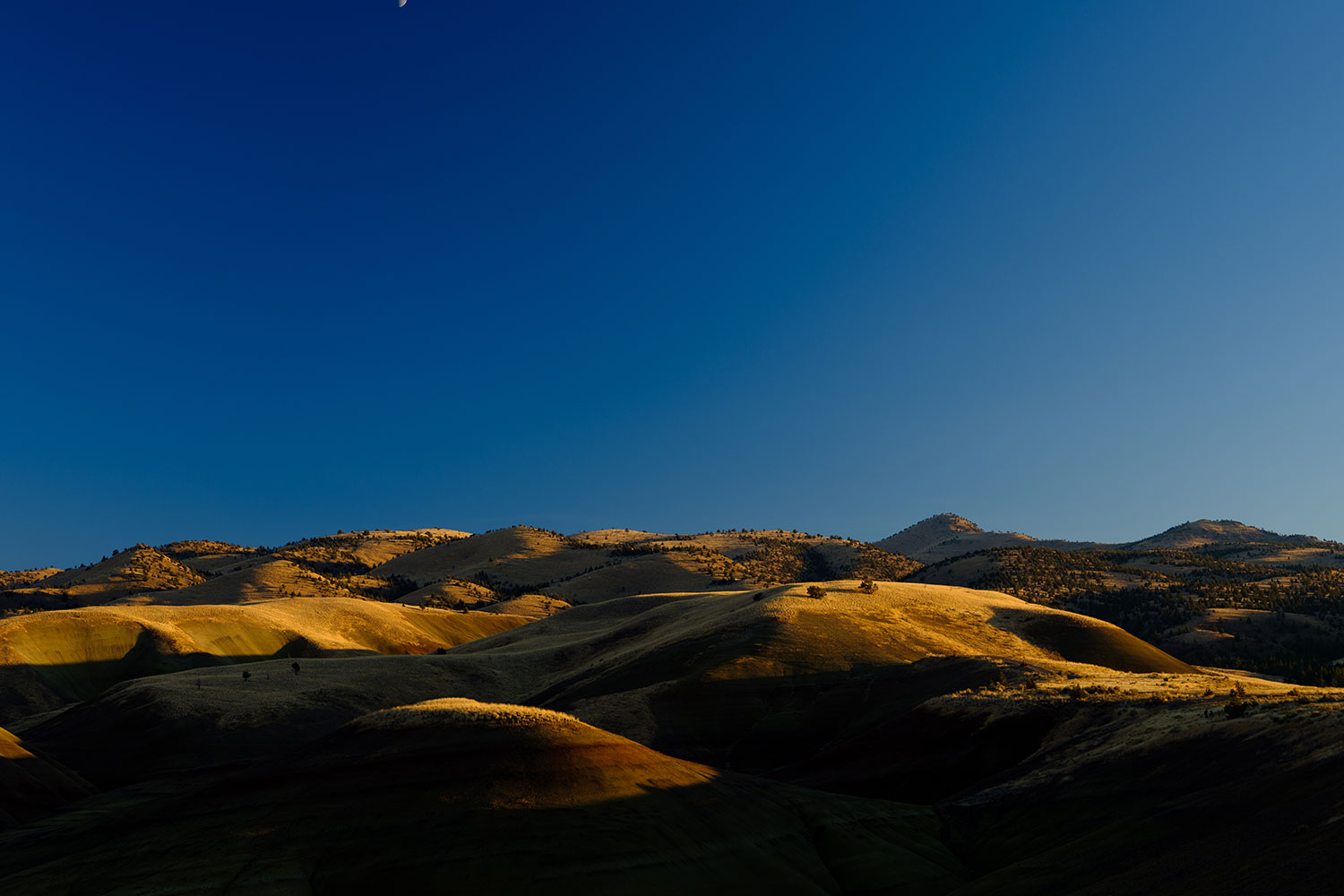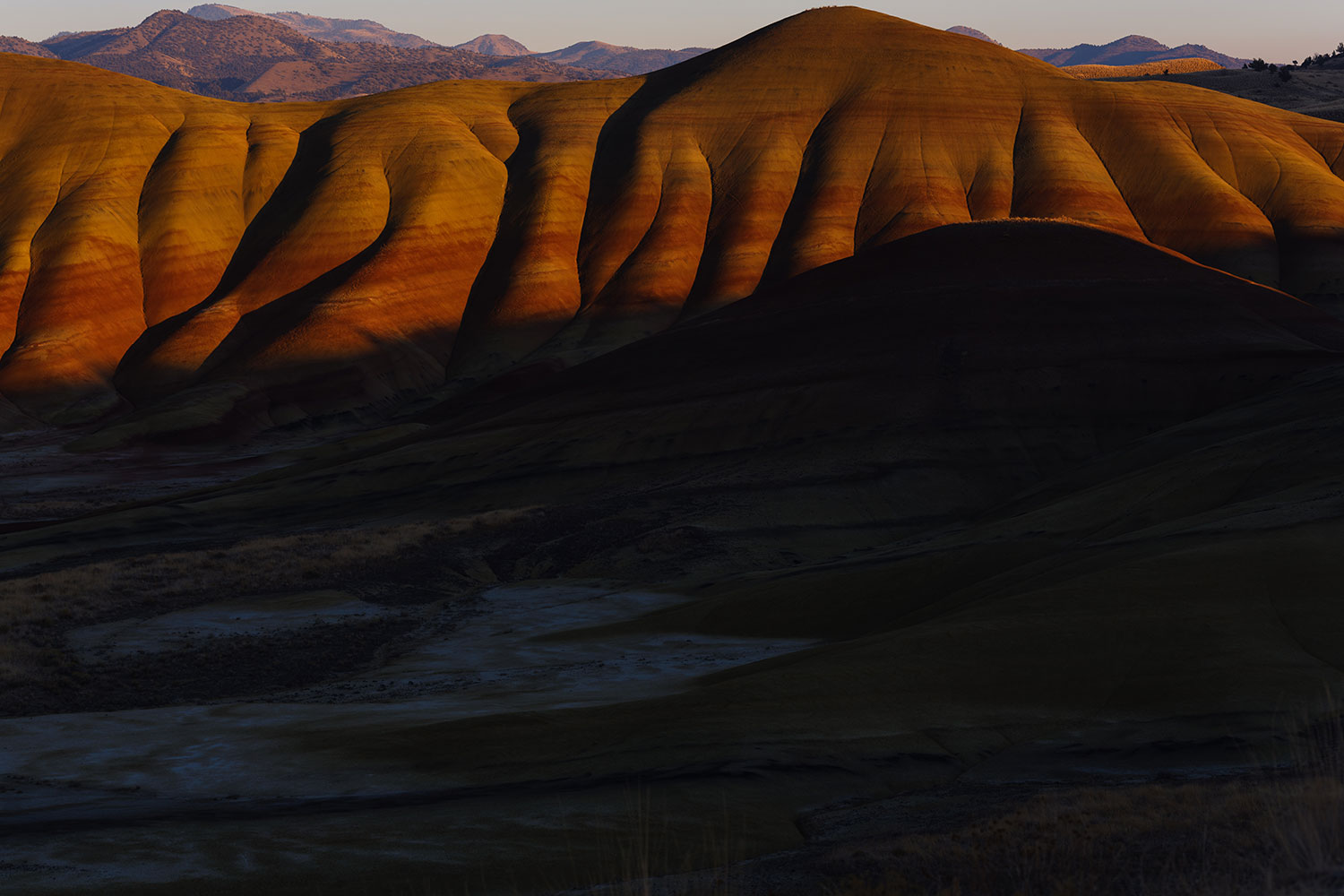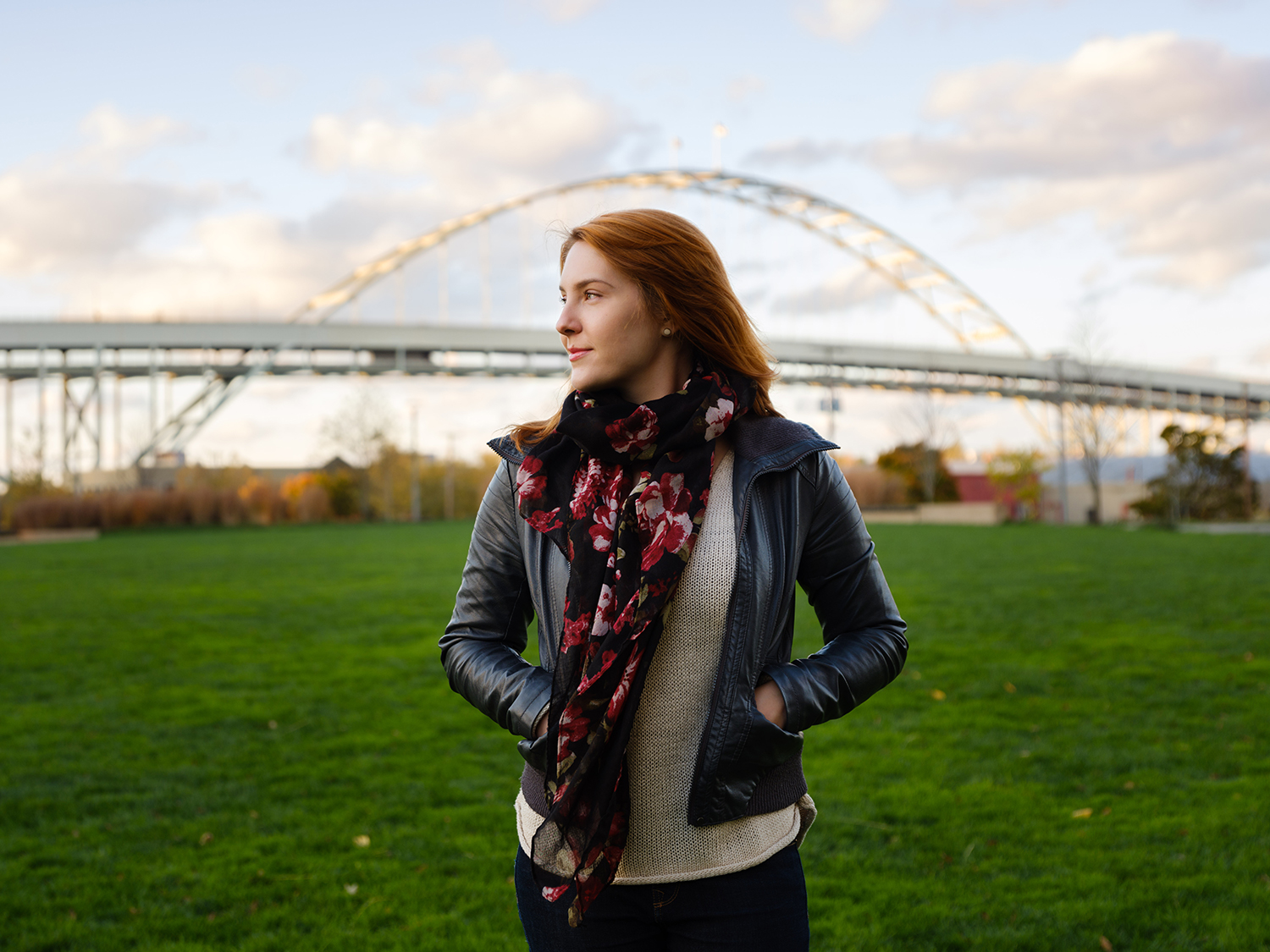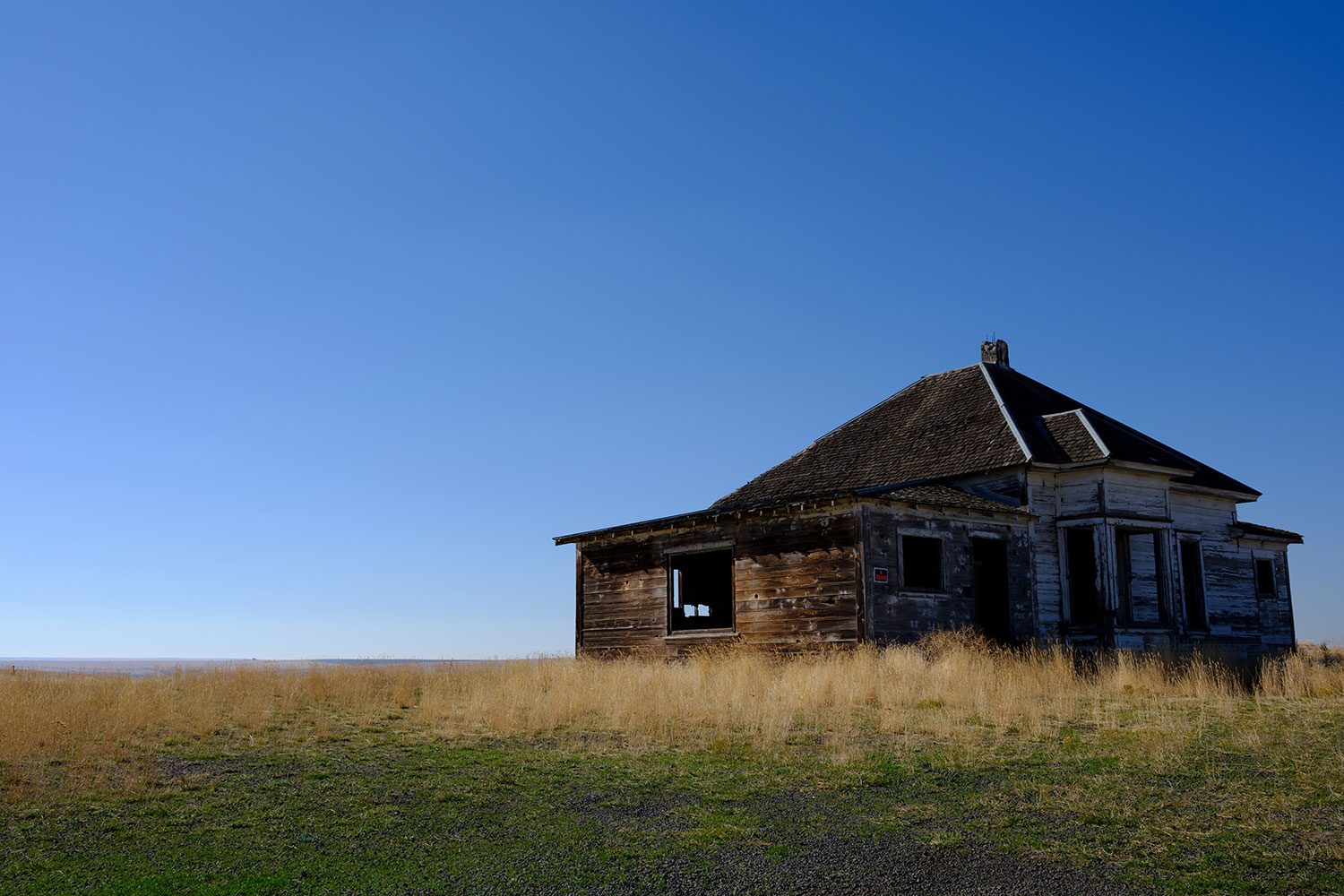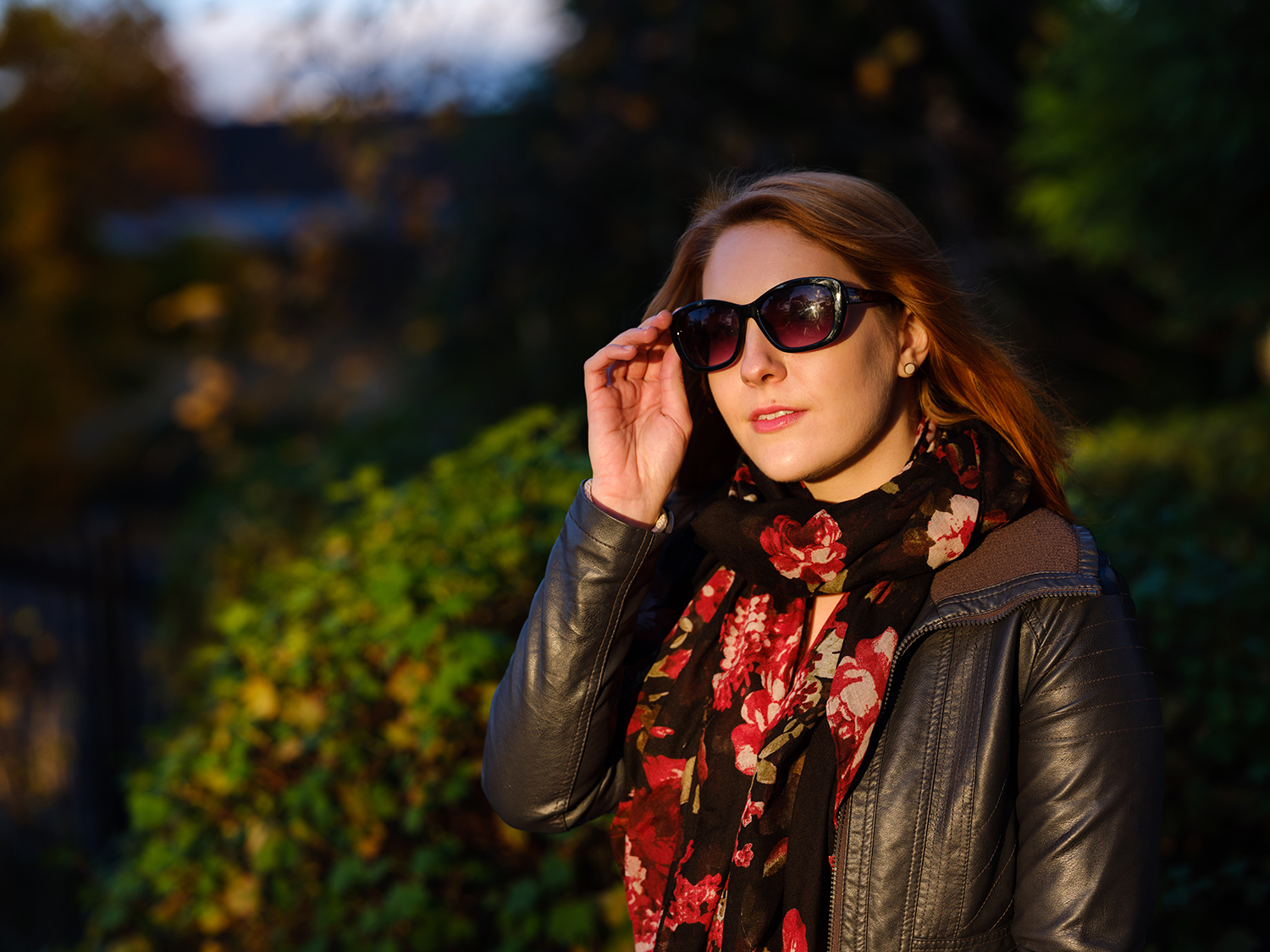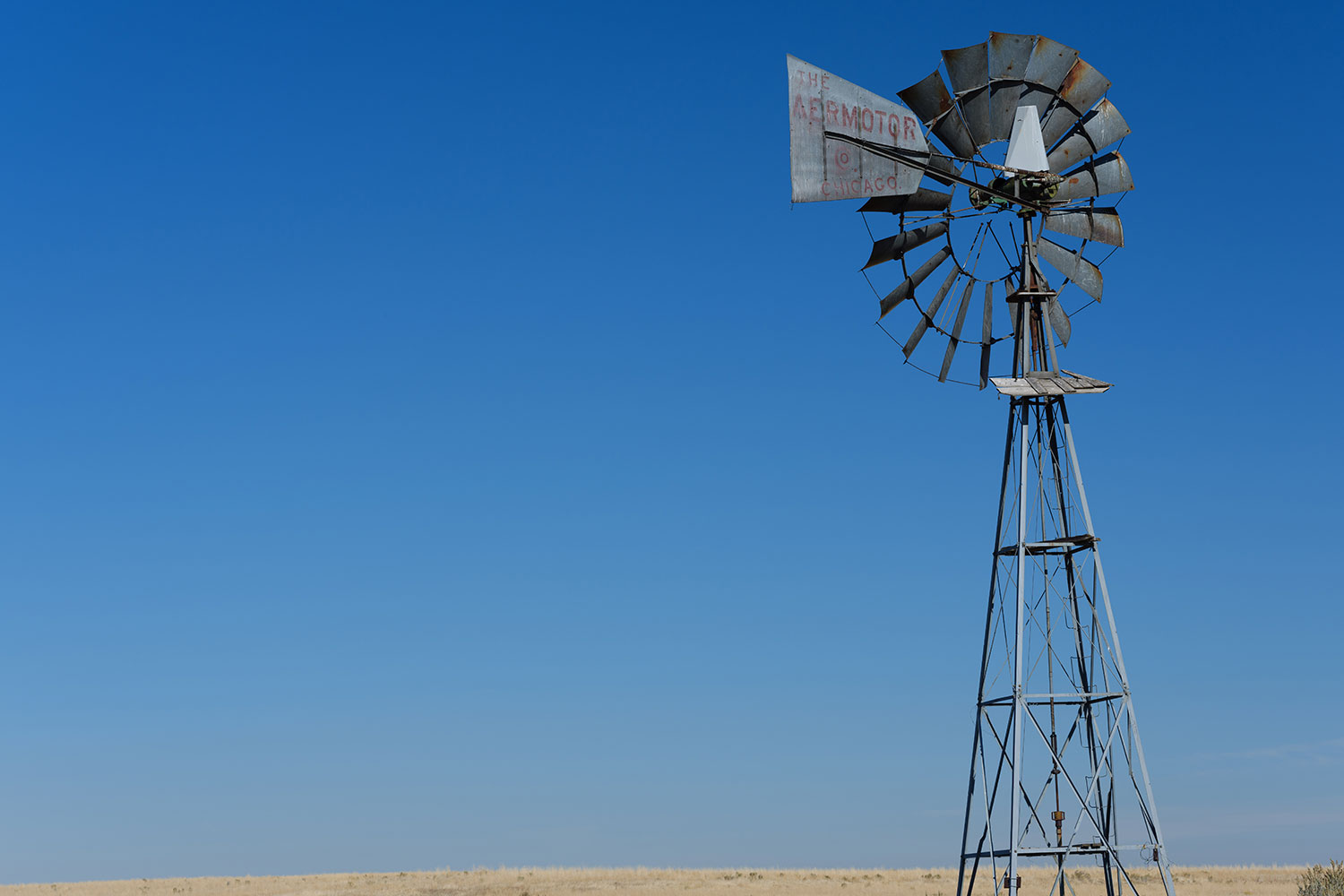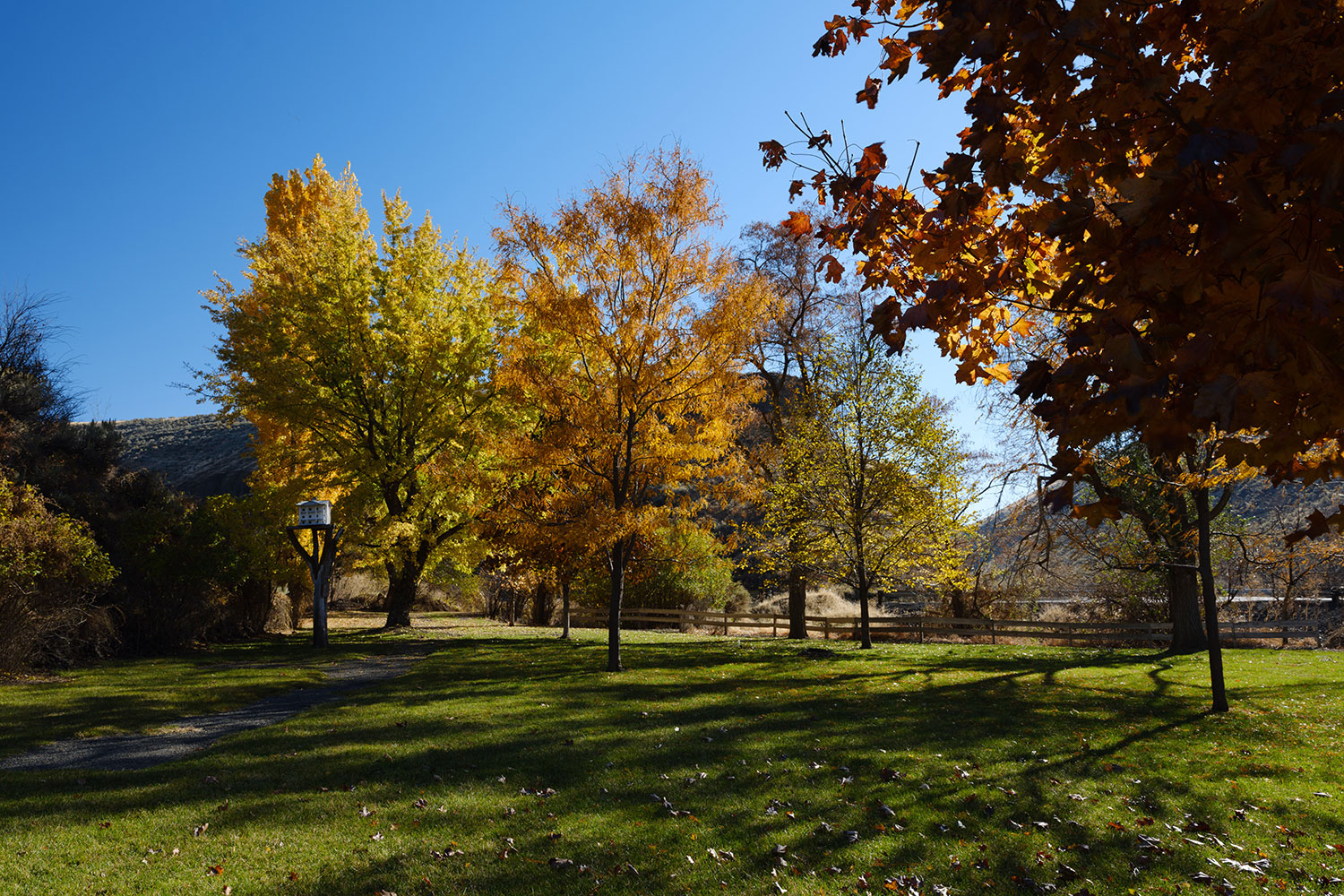“If you really enjoy the process of photography, you’ll fall in love with the Fujifilm GFX.”
- Great image quality
- User-friendly interface
- Good battery life
- Edge-to-edge AF coverage
- Relatively affordable
- Image quality not that much better than full-frame
- 1/125 sec. flash sync speed
- Continuous AF basically unusable
In our Fujifilm GFX 50S review, we take a look at what may the most promising medium format camera to come along in some time. It is the second mirrorless medium format camera, arriving just behind Hasselblad’s stylish but slow X1D-50c. Fujifilm’s goal with the GFX is simple: Take medium format and make it more approachable. In that, it has certainly succeeded. The GFX has nearly every major user-friendly feature found in more consumer-oriented cameras, including a fast start-up time, an articulating touchscreen, a familiar control layout, full-resolution JPEGs in-camera, and a self-cleaning sensor — all things the X1D lacks.
Maybe the price, at $6,500, isn’t what we’d call approachable, but even that is friendlier than the $9,000 price tag of the X1D.
All of this leads to a product that combines the appeal of exclusivity inherent of medium format with the ease of use of a consumer camera. Does that make it the perfect camera for dentists to toss in the passenger seats of their base model Porsche 911s when they head out to shoot landscapes during the weekend? Or is this a machine for real professional photographers? Maybe it’s something in between.
Design and specifications
Fujifilm took what it learned from developing its X-series cameras and applied those lessons to the GFX. While quite a bit larger, it resembles the X-series flagship X-T2 in a number of ways. Dedicated dials for ISO and shutter speed are right up top, while aperture is controlled via a ring on the lens. Somewhat oddly, there’s no exposure compensation dial. Instead, a large secondary display on the top of the camera serves up all of your pertinent shooting information. This is a really great display that makes use of the extra real estate atop the GFX’x large grip.
The rear LCD screen tilts up and down and can flip out to the right about 45-degrees, just like the X-T2. As a mirrorless camera, there’s no optical viewfinder. Instead, there’s a removable electronic viewfinder (EVF). Leaving it off saves a little weight, but you’ll probably want to keep it on most of the time. It is large and comfortable to use, and while its 3.7-million-dot resolution is certainly sharp, it does suffer from moiré, which is a bit annoying. Fujifilm also sells an optional tilt and pivot adapter for it — if you don’t mind shelling out an additional $570.
The GFX really shines as a landscape camera.
The body does seem rather large overall, especially considering the shortness of its flange back distance, which is only about a 1/4-inch longer than Hasselblad’s XCD mount on the X1D, while the body is nearly an inch deeper. This is due to the battery compartment being located between the sensor and the LCD, rather than in the grip as is common on other cameras. This definitely adds bulk, but it also keeps the battery accessible when the camera is on a tripod or using the optional vertical grip ($600).
With the viewfinder attached, the GFX weighs in at 2 pounds without a lens, nearly half a pound heavier than the Hasselblad X1D. While Fujifilm makes some relatively compact primes, the two lenses we tested — the 32-64mm f/4 and the 110mm f/2 — are both definitely not small. Overall, Hasselblad appears to be much more focused on producing a portable system with the X1D, whereas Fujifilm is sort of bridging the gap between that and a traditional medium format DSLR.
On the inside, you’ll find a 50-megapixel CMOS sensor measuring 43.8 x 32.9 millimeters, the same one used in many other medium format cameras, including the X1D, Pentax 645Z, and Phase One IQ250. Strictly, this is “cropped” medium format, just 70-percent larger than 35mm, a.k.a. full-frame. This is enough for an inherent advantage over full-frame when it comes to light receptivity, but even as the GFX boasts the highest ISO range of any camera yet to employ this sensor — expandable up to 102,400 — some full-frame cameras can go higher (although noise levels won’t necessarily be better at the same ISO).
Ultra-low-light shooting is not really what this camera about, however. Autofocus is performed on-chip via a 117-point contrast-detection system that, notably, covers the entire frame — but it really likes to have a lot of light to function quickly. In good conditions, it is faster than what we experienced with the X1D, at least when using linear motor (LM) lenses like the two we tested. Those 117 points can also be split up into smaller sizes, increasing the number to 425.
With a maximum continuous speed of just 3 frames per second (fps), a sports camera this is not. However, thanks to a focal-plane shutter, it does reach a maximum shutter speed of 1/4,000 of a second, suitable for stopping all but the fastest motion. (We’ll cover the downsides of a focal plane shutter later on.)
Interestingly, the GFX features both microphone and headphone ports. It even has HDMI output. All of this to support a 1080p video mode that we wager will see very little use. Better to have it than not, we suppose, but nobody is going to buy this camera for video.
User experience: In the field
The GFX really shines as a landscape camera. This is where everything comes together in a way that plays to its strengths while avoiding its weaknesses. As we saw with the Hasselblad X1D, this sensor produces gorgeous landscapes thanks to some pretty extreme dynamic range and plenty of detail. Here, the contrast detection autofocus is perfectly fast enough, or focus manually using the punch-in feature on the screen or viewfinder to really dial it in. The camera’s larger size and weight can come into play if you need to carry your gear on foot for a good distance, but it won’t affect how you actually use the camera once you’re set up on a tripod.
For stationary subjects, like posed portraits, the single-shot AF works totally fine.
The GFX is also fully weather sealed, as are all of the lenses, so you don’t have to worry about a little rain, dust, or snow slowing you down. With a CIPA rating of 400 shots, you’ll be able to keep shooting longer, too. What’s more, based on our experience, real-world use will probably give you more in the range 600 shots.
What we didn’t like so much was the amount of distortion produced by the 32-64mm f/4 lens. Distortion is common in wide-angles, but knowing how well Fujifilm can manage it on lenses like the XF 16mm f/1.4 for its X-series cameras, it was a little disappointing to see it here.
As a street camera, which is apparently something the GFX is supposed to be “good” at, it doesn’t add up. The AF is too slow, but mostly the camera is just too dang big. There is no way anyone would feel comfortable shooting this camera for discreet street portraits; you would draw far too much attention to yourself. Stick with the X-series if street photography is your game.
While we certainly recommend using this camera on a tripod, it’s not bad handheld. The weight is manageable, although we do prefer the ergonomics of the X1D.
Where the GFX simply starts to fall apart is when shooting moving subjects. Continuous AF performance is so bad as to make tracking a moving subject virtually impossible. For stationary subjects, like posed portraits, the single-shot AF works totally fine. It falls behind the phase detection systems found in full-frame and APS-C DSLRs and mirrorless cameras (including Fujifilm’s own X-series models), but it still feels responsive. Let’s hope a future firmware update can improve the continuous AF performance.
User experience: In the studio
In a studio setting, the extra bulk of the GFX doesn’t hold it back (it’s still smaller than most other medium format cameras, after all). We shot a series of portraits using the 110mm f/2 lens, which is now up there with the Sigma 135mm f/1.8 Art as one of our favorite portrait lenses. Our lighting setups were pretty simple, consisting of one or two Profoto D1 monolights, and we were quite pleased with the results. But the GFX has one nagging concern when it comes to shooting with flash: the focal plane shutter.
This is where it behaves more like a full-frame DSLR or mirrorless camera than other medium format cameras, most of which use leaf shutters. We talked about this a bit in our Hasselblad X1D review, but basically a leaf shutter can sync with a flash at any available shutter speed, whereas focal plane shutters have a maximum, beyond which the entire sensor is not exposed at the same time, and therefore using a flash would lead to a partial exposure.
Among full-frame (and APS-C) cameras, that maximum flash sync speed is usually 1/200 or 1/250 of a second, but on the GFX (presumably due to the larger sensor) it is only 1/125. Now, in our specific location, this wasn’t an issue — ambient light was low enough that we could cut it out at base ISO and 1/125, even when shooting at f/2.8. However, this could cause problems in other scenarios, particularly when shooting outdoors and using flash as a fill light or to overpower the sun. It’s not the end of the world, though, as you can always put a neutral density filter on the lens — but this will effectively lower the power of the flash in addition to ambient light, so you may need a stronger strobe than what you could get away with on other medium format systems.
So when it comes to working in the studio (or outdoors with flash), the GFX is great for enthusiasts and some professional use, but high-end commercial shooters may struggle with it. This isn’t just because of the shutter. The GFX is a capable camera, particularly given its price compared to other medium format options, but the camera is just one part of the equation in professional studio photography. Fujifilm simply doesn’t offer a complete workflow solution like Hasselblad or Phase One do, and the choke point becomes the software.
You can shoot tethered into a computer with the GFX, but only with Fujifilm’s feature-limited X Acquire software or into Adobe Lightroom via a $29 plug-in. And if you want to actually control the camera from within Lightroom, you’ll need to shell out $79 for the Pro version of said plug-in.

Tethering or not, you basically need to rely on Lightroom for your RAW processing. Now, Lightroom has its advantages — we use it daily — but when it comes to pure image quality, you can get better results by using first-party software, and commercial medium format shooters tend to be quite particular about this. Hasselblad has Phocus and Phase One has the excellent Capture One, but Fujifilm only has its awkward RAW File Converter EX powered by Silkypix, which feels like it was built for Windows 95 (which, we suppose, is in line with Fujifilm’s ethos of retro design).
Now, we won’t get too deep into this, because honestly Lightroom is probably fine for the average user, but there is a way to hack the Fuji RAW files so that they can be opened in Capture One, by tricking the software into thinking the images were shot on a Phase One IQ250 digital back (which uses a version of the same sensor). We did this, compared the results to Lightroom, and found it did make a noticeable difference. Capture One had a punchier look overall, with better color and midrange contrast, while still maintaining all the highlight and shadow detail. In Lightroom, shadows tended to block up sooner despite a default tone curve that was very, very flat.
That isn’t to say you can’t work within Lightroom to get to a similar end point, but it does take work. There is definitely a difference between a program built for every camera under the sun and one designed specifically to take advantage of medium format sensors. Again, this probably isn’t a huge issue for most users, but high-end studio professionals may want to think twice.
Is medium format really better than full-frame?
Well, the technical answer is yes. Image sensor benchmarking firm DxOMark recently released its scores for the Hasselblad X1D-50c (102) and the Pentax 645Z (101), putting them in first and second position in the overall rankings. Those cameras both use the same basic sensor as the Fujifilm GFX. However, the full-frame Nikon D850 is not far behind, with a score of 100. Dig a little deeper, and you’ll see the D850 only falls behind with regard to ISO sensitivity — at its base ISO of 64, it is essentially on par with medium format.
You can spend half the money and get 95-percent of what the GFX offers with a Nikon D850.
This is the result of full-frame sensor development proceeding at a faster pace than medium format (Hasselblad introduced the first camera built on the same 50MP medium format sensor nearly four years ago). By going with medium format, Fujifilm has basically leapfrogged over full-frame, and one may wonder why. Looking at the market, the decision is understandable: Going up against Sony in the full-frame mirrorless arena would be a struggle, to say the least. Fujifilm carved out a nice niche for itself with its APS-C X-series, and the GFX seems to be an attempt to create another niche, this time in a higher-end segment. (Fujifilm has made medium format film cameras in the past, but the GFX is its first digital one.)
It also gives X-series owners something to aspire to that is different enough to not devalue their current cameras. Any Fujifilm X-T2 owner would likely be quite smitten with a GFX added to his arsenal (this reviewer included), but one camera certainly wouldn’t replace the other.
But as long as you’re investing in an entirely new system, does spending $6,500 on the GFX make sense? Is that extra one or two points on the scoreboard worth it? Keep in mind, even for current X-series users, there isn’t much to be gained by staying in the Fuji camp (the GFX and X-series share a hot shoe design and a menu system, but it’s not like you can use the same lenses). If it’s resolution, dynamic range, and ISO sensitivity you’re after, you could spend just over half that money and get 95-percent of the way there with a Nikon D850 or Sony A7R Mark III. And with either of those cameras, you’d get better autofocus, faster burst shooting, higher maximum shutter speeds, much better video modes, and a smaller overall package (particularly with the Sony). Oh, and you’ll have a much wider lens selection to choose from (although, Fujifilm is doing a nice job of building out its lens ecosystem relatively quickly).
Warranty
The GFX carries a one-year limited warranty, but Fujifilm does offer an optional three-year extension for $299. The GFX Service Pack, which provides discounted repairs, loaner gear, and other services, can be added to the extended warranty for a total of $599, or purchased separately for $499.
Our Take
It’s hard to make the rational case for a camera like the GFX. It’s a fantastic machine that can produce some truly wonderful photographs, but with how good full-frame cameras and lenses have gotten in recent years, medium format just doesn’t make sense for the majority of shooters, particularly the “cropped” medium format used here. Without faster lenses, even the subjective advantage of a shallower depth of field isn’t really present.
However, even if it doesn’t win your mind, the GFX may yet win your heart. It won’t work for every tier of professional, nor is it just an exclusive toy for amateurs with rich taste. It appeals to real photographers by providing an emotional experience that is second to none and delivers on that experience with excellent image quality (even if it’s not all that much better than full-frame). If you really enjoy the process of photography, you’ll fall in love with this camera. It invites you to approach your subject methodically and mindfully, and proves that going slow isn’t always a bad thing.
We get to shoot a lot of cameras here, and when it comes time to send them back, we can generally let them go with little more than a “well, that was fun.” But the GFX was different; since it left our hands, we haven’t stopped thinking about it. We really enjoyed shooting it, even if we can’t give you a scientific reason for why.
Is there a better alternative?
We must concede that most people are better off with a full-frame camera; that’s just the way it is. Armed with a Nikon D850 and some Sigma Art glass, you’ll have no trouble creating images that compare to those from the GFX — and you’ll do it for far less money. Some will even argue that APS-C cameras are also just fine for most photographers, while a camera like the Olympus OM-D E-M5 Mark II employs sensor-shifting to shoot a 40-megapixel image from a small Micro Four Thirds sensor.
If you’re set on medium format, and a mirrorless one at that, the Hasselblad X1D provides some good competition. It isn’t necessarily better, but its focus on compactness — in both the body and the lenses — is a plus for some users. It’s also part of a more established medium format system (which includes better processing software). However, we can’t ignore that it costs $2,500 more than the GFX, nor does it have any creature comforts like automatic sensor cleaning or in-camera full-resolution JPEGs.
If you don’t mind upsizing, you can also pick up the Pentax 645Z for just under $5,500 now, thanks to a $1,500 instant rebate that doesn’t seem to be going anywhere anytime soon. As a DSLR, it comes with an optical viewfinder, but suffers from less AF area coverage compared to the GFX.
How long will it last?
This is a very well made machine that should last for years to come. The lenses do feel a bit less substantial, probably as a result of trying to save weight, but we didn’t encounter any problems throughout our review period.
It is unclear when the camera will be replaced with a new version, but we would expect it to have a relatively long product cycle, probably three-plus years. It began selling in February 2017.
Should you buy it?
Just as we said regarding the Hasselblad X1D, most of us shouldn’t. Your money is probably better spent on a high-end full-frame system and some good lenses. But we have to admit, we loved shooting with the GFX, and if you’ve got the money to burn, you’ll love it, too. It’s just important to realize that the buying decision is more of an emotional one, and the rewards are largely emotional rewards.






